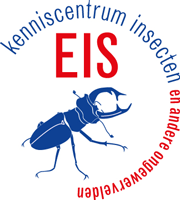| Vestigingsstatus |
Gevestigd |
|
| Zeldzaamheid |
Lokaal |
|
| Invasiviteit |
Niet invasief |
|
| Invasiviteit (toelichting) |
Colonies of Victorella resemble those of the genus Bowerbankia. These groups are usually differentiated based on differences in growth from the stolon. In Bowerbankia, new zooids are budded separately from the stolon; in Victorella, the stolon arises from the base of zooids. In Europe more than one Victorella species are recognized, at the moment it is not completely clear which name should be used for the species that inhabits the coastal waters of the Netherlands and Belgium. According to Den Hartog & Van der Velde (1987) and Wolff (2005) the species Victorella pavida Kent, 1870 is present, which they consider an exotic, non-indigenous, cryptogenic species. Faasse & De Blauwe (2004) also use this name, but De Blauwe (2005) uses the name Victorella sp., comprizing the species Victorella muelleri (Kraepelin) and V. pavida. This latter species is a cosmopolitan whose area of origin is unknown (Hayward, 1985). The range in the western Atlantic extends from Chesapeake Bay to Brazil and the species is also present in Europe. It might even be indigenous. If introduced, it coud be a native of the Indian Ocean (Cohen & Carlton, 1995). In that case, it probably arrived on ships’ hulls. |
|
| Type introductie |
Niet opzettelijk |
|
| Jaar van eerste melding |
1936 |
|
| Natuurlijke verspreiding |
Onbekend |
|
| Verspreiding in Nederland |
Friesland |
|
Noord-Holland |
|
Zuid-Holland |
|
Zeeland |
|
| Verspreiding in Nederland (toelichting) |
This species is not present in marine habitats. It is strictly recorded from low-brackish inland creeks, lakes and waters and also lives in fresh water. It is often found on reed, but has also been recorded from other substrata, for instance shells, stones, wood, waterplants, barnacles. It is permanently established. Vorstman (1936, 1954) lists early records from the IJ near Oranjesluizen as well as several localities in Amsterdam. De Vos (1941) mentiones the species from one locality in the former Zuiderzee and from localities elsewhere. Heerebout (1970) mentions several localities in the Dutch Delta area. It is known from many localities in the province of Zeeland, several in Noord Holland. The species is also recorded in Friesland (Harlingen: Tulp 1988). Faasse and De Blauwe (2004) list all records known from the Netherlands. |
|
| Habitats |
Estuaria en brakwatergebieden |
|
Meren |
|
Waterwegen |
|
| Wijze van introductie |
Aangroei op scheepsrompen |
|
| Ecologische impact (toelichting) |
V. pavida is a protected brackish water species in the United Kingdom (Barnes, 1994). This is not the case in the Netherlands. There are no records on any ecological impact of this species in the Netherlands. |
|
| Economische impact (toelichting) |
There are no records on any economic impact in the Netherlands. |
|


